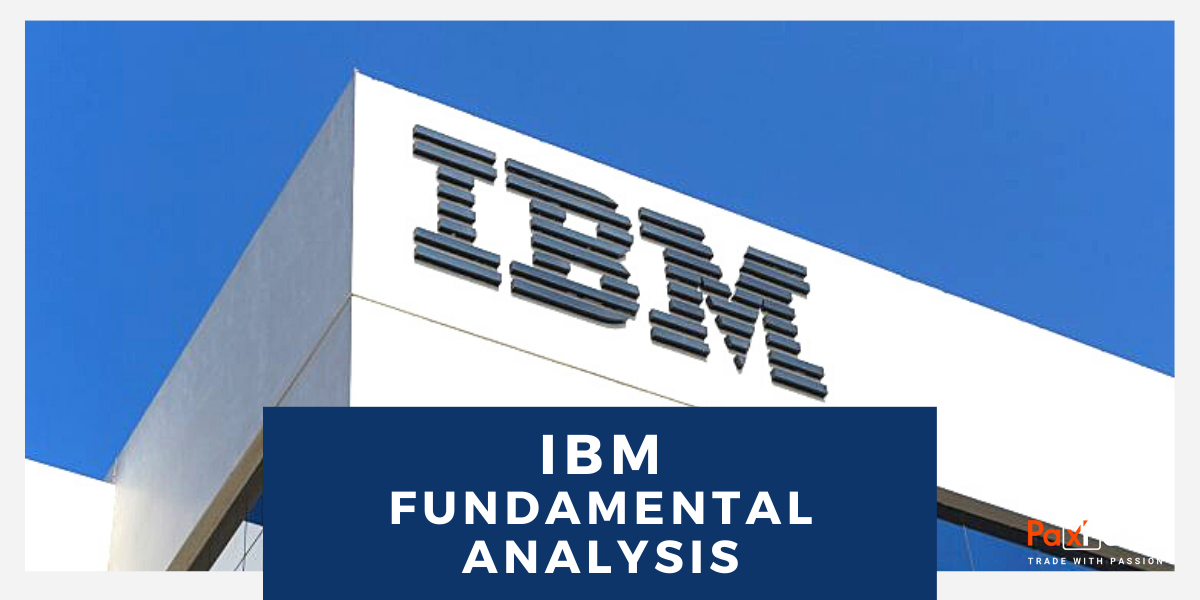
Source: PaxForex Premium Analytics Portal, Fundamental Insight
It's hard to believe now, but IBM once had a larger market cap than Microsoft. On December 12, 2011, IBM was worth $216 billion while Microsoft trailed slightly at $215 billion. Fast forward to today, and IBM's value stands at about $214 billion, while Microsoft has skyrocketed to become the world's third-most valuable company, with a market cap of $3.18 trillion. Let's examine how these two tech giants followed diverging paths and whether IBM could rekindle growth to close the gap by 2035.
Back in 2011, IBM and Microsoft were both considered mature tech companies. However, each company embraced very different strategies in the years that followed. IBM decided to streamline operations, selling off lower-margin businesses and focusing on cost-cutting. This approach allowed the company to buy back shares and drive up its earnings per share (EPS) despite slowing revenue growth. However, this strategy also meant IBM missed out on the rapidly expanding cloud infrastructure market, leaving it vulnerable to disruption in its traditional enterprise software and hardware businesses.
Microsoft initially seemed to be following a similar path, but things changed in 2014 when Satya Nadella became CEO. Nadella pivoted Microsoft toward a "mobile-first, cloud-first" approach, expanding cloud services and mobile versions of its apps. Under Nadella’s leadership, Windows evolved into a central hub for cloud services, the Xbox gaming ecosystem grew with strategic acquisitions, and Microsoft made a strategic investment in OpenAI, integrating AI tools into its cloud offerings. This vision required heavy investments, initially compressing Microsoft’s margins, but ultimately paid off as Azure grew into the world’s second-largest cloud infrastructure platform. The early move into AI also set Microsoft up as a leader in a rapidly expanding market.
From 2014 to 2024, Microsoft saw remarkable growth, with annual revenue increasing at an 11% compound annual growth rate (CAGR) and EPS rising by 16% CAGR. This growth drove an over 820% increase in Microsoft’s stock over the last decade. IBM, on the other hand, struggled to keep pace. Ginni Rometty, IBM's CEO from 2012 to 2020, tried to balance cost reductions with incremental investments in cloud. However, these efforts couldn’t offset the declines in IBM's legacy hardware, software, and managed IT services divisions, resulting in a negative 6% CAGR in revenue from 2012 to 2021, with EPS declining by 9% CAGR.
IBM's trajectory took a positive turn in 2021 when Arvind Krishna, the company’s former cloud chief, assumed the role of CEO. Krishna spun off IBM’s slower-growth managed IT infrastructure services into a separate entity called Kyndryl, refocusing IBM on its open-source software subsidiary Red Hat. This new focus aimed to strengthen IBM’s hybrid-cloud and AI offerings. Since then, IBM’s revenue has grown at a 4% CAGR from 2021 to 2023, with EPS increasing at a 13% CAGR. This turnaround boosted IBM's stock by nearly 100% over four years, roughly matching Microsoft's gains in the same period.
Despite this comeback, IBM’s growth remains modest compared to Microsoft. Analysts project IBM's revenue and EPS will grow at a CAGR of 4% and 7%, respectively, from 2023 to 2026. Meanwhile, Microsoft's growth outlook remains robust, with analysts forecasting a 14% CAGR for revenue and a 15% CAGR for EPS from fiscal 2024 to 2027. IBM remains largely absent from the fast-growing cloud-infrastructure market, dominated by Amazon Web Services (AWS), Microsoft Azure, and Google Cloud. Instead, IBM is carving out a niche in hybrid cloud and AI, positioned between public and private cloud platforms. In contrast, Microsoft has ample growth potential as it continues to expand its cloud infrastructure, services, AI capabilities, and gaming division.
Assuming IBM achieves analyst projections and grows EPS at a 7% CAGR from 2026 to 2036, its stock could increase by about 80%, boosting its market cap to roughly $370 billion by 2035, if it trades at 20 times forward earnings. If Microsoft also meets projections and maintains a slower 10% EPS CAGR from fiscal 2027 to 2036, its stock could double, driving its market cap to nearly $6.4 trillion.
IBM will likely remain less valuable than Microsoft in 2035, but it still has the potential to be a rewarding investment relative to its past decade's performance. If IBM effectively capitalizes on its strengths in hybrid cloud and AI, it may be able to deliver returns that closely approach Microsoft’s growth trajectory. Ultimately, IBM's success will depend on its ability to innovate and capture opportunities in the evolving tech landscape, while Microsoft’s growth hinges on continuing to lead in cloud, AI, and expanding digital ecosystems.
As long as the price is above 200.00, follow the recommendations below:
- Time frame: D1
- Recommendation: long position
- Entry point: 210.00
- Take Profit 1: 215.00
- Take Profit 2: 220.00
Alternative scenario:
If the level of 200.00 is broken-down, follow the recommendations below:
- Time frame: D1
- Recommendation: short position
- Entry point: 200.00
- Take Profit 1: 195.00
- Take Profit 2: 190.00













